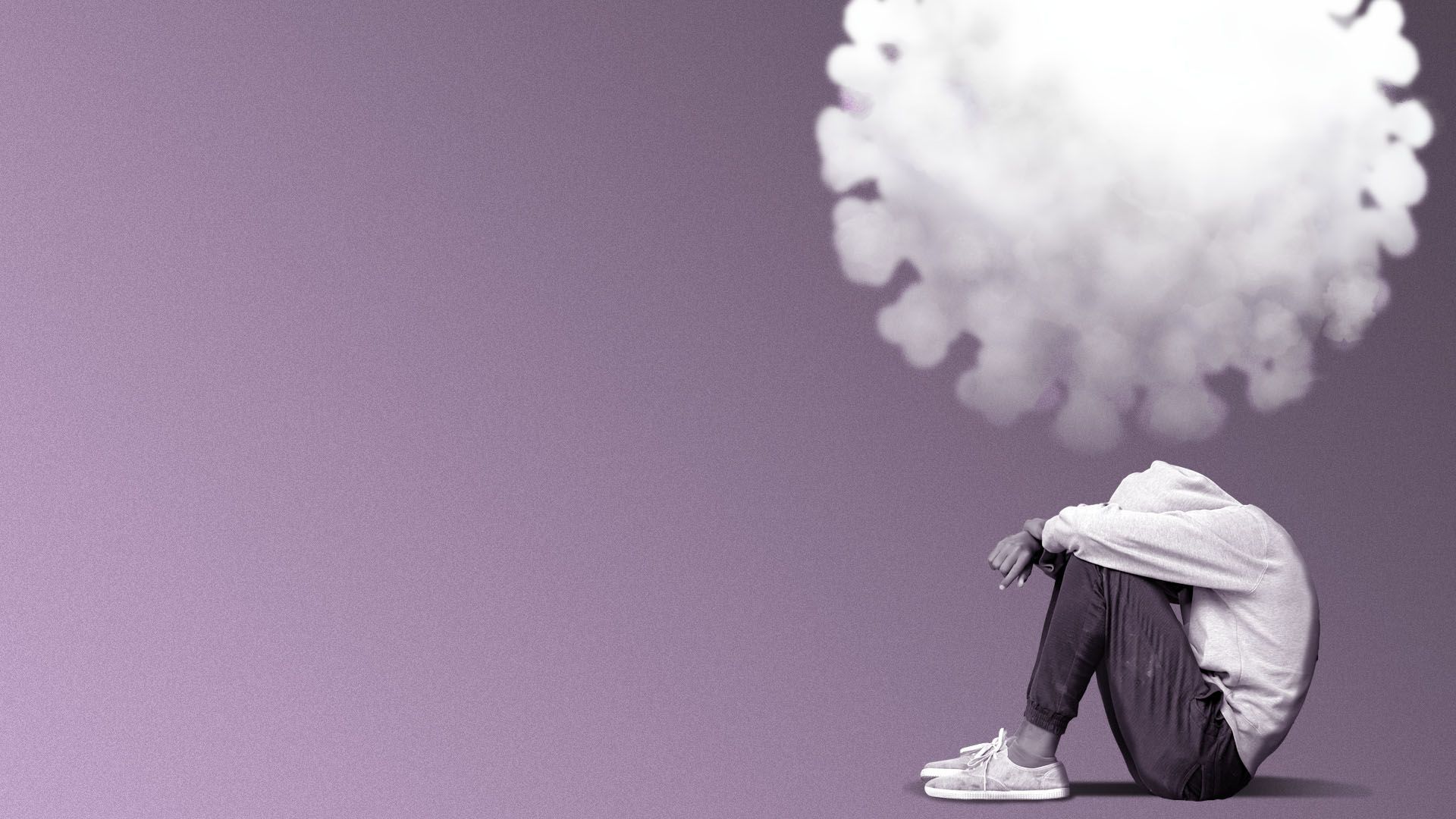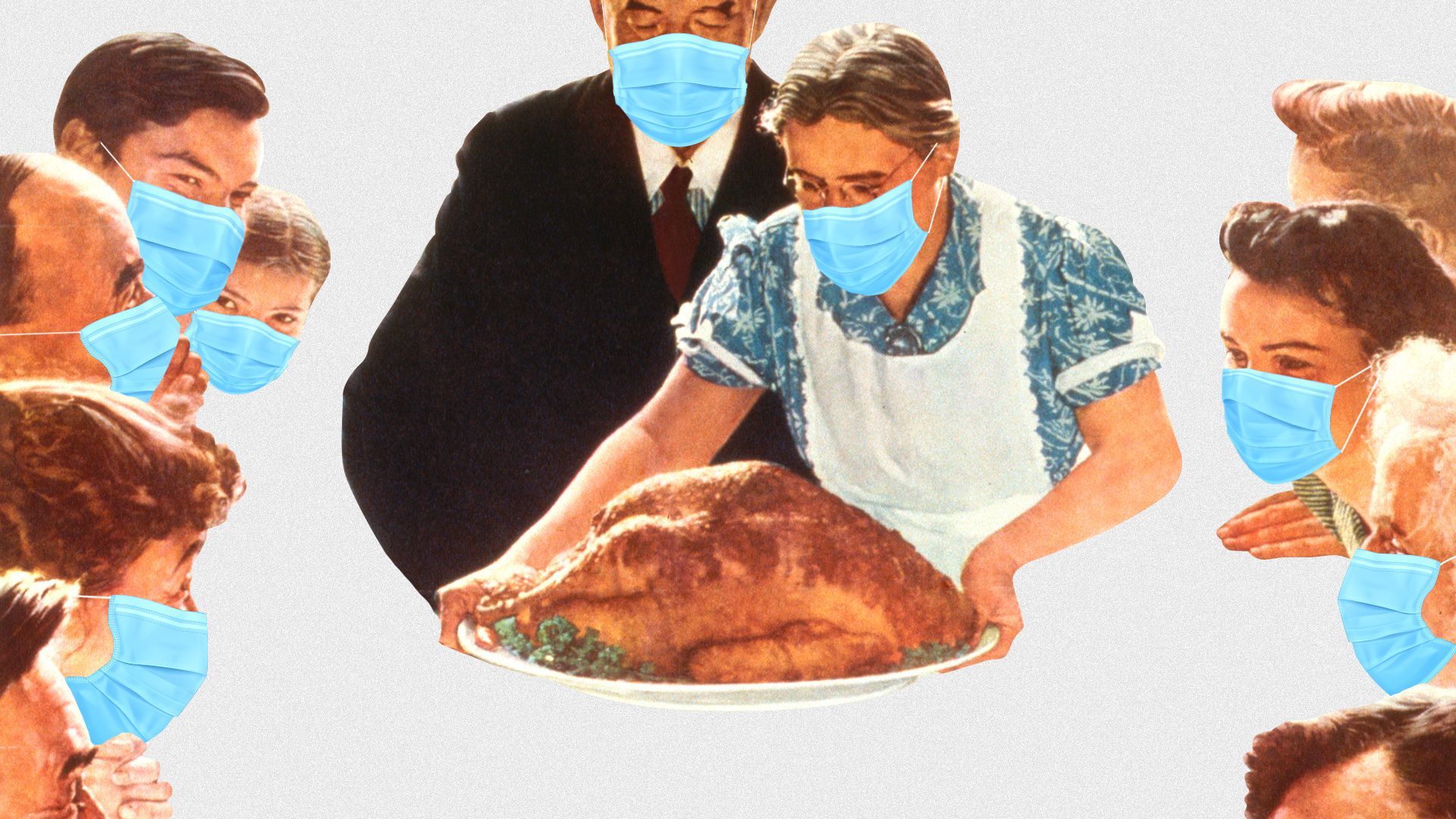| | | | | | | Presented By PhRMA | | | | Vitals | | By Caitlin Owens ·Feb 11, 2021 | | Good morning. Today's word count is 998, or a 4-minute read. | | | | | | 1 big thing: Coronavirus infections are plummeting |  Data: The COVID Tracking Project, state health departments; Map: Andrew Witherspoon/Axios New coronavirus cases continued their sharp decline over the past week — progress that could help the U.S. find its way out of the pandemic faster and more safely, if it keeps up, Axios' Sam Baker and Andrew Witherspoon report. The big picture: Getting the virus' spread under control is the key to saving lives and reopening schools and businesses. - And the tools to achieve that — masks, social distancing and vaccines — are also the most effective weapons against the more contagious variants that could threaten America's progress.
By the numbers: An average of 108,000 Americans were diagnosed with COVID-19 infections each day over the past week. - That's a 24% decline from the week before.
- Hospitalizations were also down last week, by about 8%, and deaths fell by 3%. The virus is still killing an average of roughly 3,000 Americans per day.
Between the lines: 108,000 new cases and 3,000 deaths per day is still a very bad situation, and shouldn't be considered a sustainable level of infection. - But after the horrific winter outbreak the U.S. experienced, the only way to have a small number of cases is to keep climbing down week after week. And that's happening.
- Nationwide, average daily cases have been declining by double digits for four weeks straight. Cumulatively, they've fallen by roughly 55% over that time.
- It's been three weeks since even a single state reported an increase in average daily infections.
This is real progress. What's next: Experts have warned that new, more contagious variants of COVID-19 are gaining ground in the U.S. and likely will soon become the dominant strain here. That means each infected person is more likely to spread the virus. |     | | | | | | 2. Experts worried about teens' mental health |  | | | Illustration: Sarah Grillo/Axios | | | | School districts and mental health professionals remain concerned about the pandemic's effect on children's mental health, Axios' Marisa Fernandez reports. The big picture: Hospitals have seen a significant increase in mental health emergencies among children, and federal officials have acknowledged that prolonged school closures have deprived students of both formal services and simple human interaction. What they're saying: "The isolation we need to do to save lives is hitting them right at their developmental core," said Ken Duckworth, chief medical officer at the National Alliance on Mental Illness. - The pandemic has been harder on teens and young adults than on younger children, said Shekhar Saxena, professor of the practice of global mental health at the Harvard T.H. Chan School of Public Health.
- "It's the young adults and the children who are being impacted and the effects are going to be long-lasting," he said.
What's happening: Clark County, Nevada, reopened schools earlier this year after 18 student suicides occurred over nine months, double the amount from the previous year. - Official data on suicide rates during the pandemic isn't available yet, but anecdotally some parents have said they believe isolation and school closures contributed to their children's' suicides.
Many schools are trying to offer virtual help. - Experts say those tools can help, but can't take the place of social interaction.
Go deeper. If you or someone you know may be considering suicide, contact the National Suicide Prevention Lifeline at 1-800-273-8255 (En Español: 1-888-628-9454; Deaf and Hard of Hearing: 1-800-799-4889) or the Crisis Text Line by texting HOME to 741741. |     | | | | | | 3. The pandemic's coming new normal |  | | | Photo illustration: Aïda Amer/Axios. Photo: Library of Congress/Corbis via Getty Images | | | | As both vaccinations and acquired immunity spread, life will likely settle into a new normal that will resemble pre-COVID-19 days — with some major twists, Axios' Bryan Walsh reports. The big picture: While hospitalizations and deaths are tamped down, the novel coronavirus should recede as a mortal threat to the world. - But a lingering pool of unvaccinated people — and the virus' own ability to mutate — will ensure SARS-CoV-2 keeps circulating at some level, meaning some precautions will be kept in place for years.
Driving the news: On Tuesday, Johnson & Johnson CEO Alex Gorsky told CNBC that people might well need a new coronavirus vaccine annually in the years ahead, much as they do now for the flu. With more contagious variants spreading rapidly, "the next 12 weeks are likely to be the darkest days of the pandemic," says Michael Osterholm, the director of the University of Minnesota's Center for Infectious Disease Research and Policy. - But the apparent effectiveness of the vaccines in preventing hospitalizations and death from COVID-19 — even in the face of new variants — points the way toward a milder future for the pandemic, albeit one that may be experienced very differently around the world.
If the inequalities seen in the early phase of the vaccine rollout persist, COVID-19 could become a disease of the poor and disadvantaged, argues Mark Sendak, the co-founder and scientific adviser for Greenlight Ready, a COVID-19 resilience system that grew out of Duke Health. Go deeper. |     | | | | | | A message from PhRMA | | We are committed to being a part of the solution | | |  | | | | America's biopharmaceutical companies are committed to ending the pandemic by: - Continuing to develop treatments and vaccines to combat COVID-19,
- Working closely with governments, insurers and others to make sure vaccines and treatments are accessible and affordable.
| | | | | | 4. Pandemic disparities extend to nursing homes | | Nursing homes with lower proportions of white residents saw higher coronavirus deaths last year, according to a new study published in JAMA Network Open. By the numbers: In the facilities with the smallest share of white residents, coronavirus deaths were more than three times higher than in the nursing homes with the largest white populations. - Adjusting for the number of beds in each facility and for county-level COVID prevalence shrunk the gap between the groups.
- But that just means that Americans of color are more likely to live in nursing homes at higher risk of worse outbreaks.
"Disparities in deaths by nursing home racial composition are associated with the disproportionately high spread of the disease in non-white communities and the characteristics of the nursing homes that serve those communities," the authors conclude. |     | | | | | | 5. Catch up quick |  | | | Illustration: Aïda Amer/Axios | | | | People who are fully vaccinated no longer need to quarantine after exposure to someone infected with the coronavirus, the Centers for Disease Control and Prevention announced Wednesday. Wearing two face masks or adjusting a mask to fit more snuggly can better help protect against COVID-19 and its highly transmissible variants, the CDC also said in new guidance. Federal authorities are investigating counterfeit N95 masks that have been sold to hospitals, government agencies and medical facilities in at least five states, AP reports. A quarter of American workers are either unsure about getting vaccinated against the coronavirus or are planning not to get the shots, according to a new survey from The Conference Board. Initial findings by a WHO team in China investigating COVID-19's origins appear to echo Beijing's talking points, Bryan writes. NIAID director Anthony Fauci said during a White House briefing Wednesday that 20,000 pregnant women have been vaccinated against COVID-19 without complications. |     | | | | | | A message from PhRMA | | Biopharma is committed to being a part of the solution | | |  | | | | As we usher in a new administration and Congress, there are many things on which we can all agree, like building a more just, equitable society. | | | | | | Axios thanks our partners for supporting our newsletters.
Sponsorship has no influence on editorial content. Axios, 3100 Clarendon Blvd, Suite 1300, Arlington VA 22201 | | | You received this email because you signed up for newsletters from Axios.
Change your preferences or unsubscribe here. | | | Was this email forwarded to you?
Sign up now to get Axios in your inbox. | | | | Follow Axios on social media:    | | | | | |
No comments:
Post a Comment